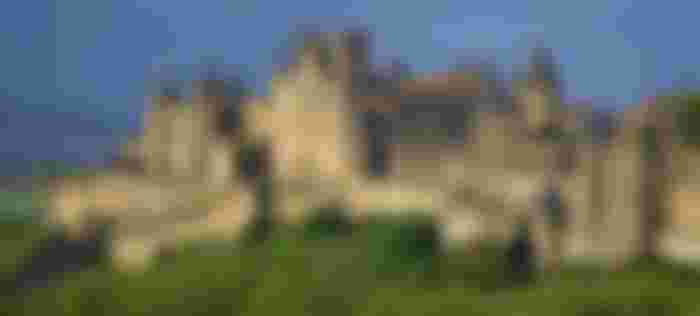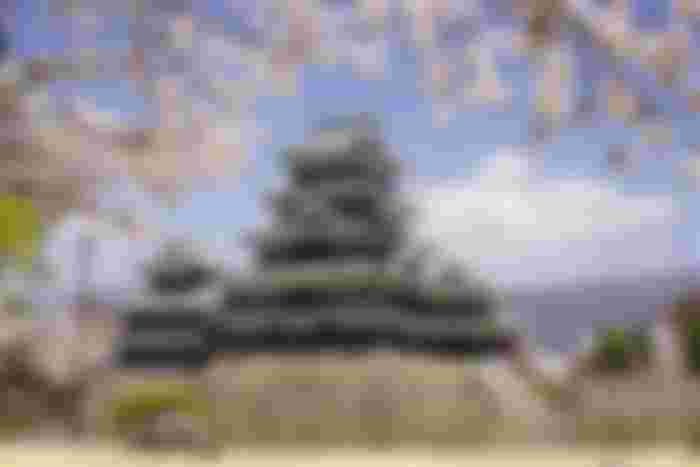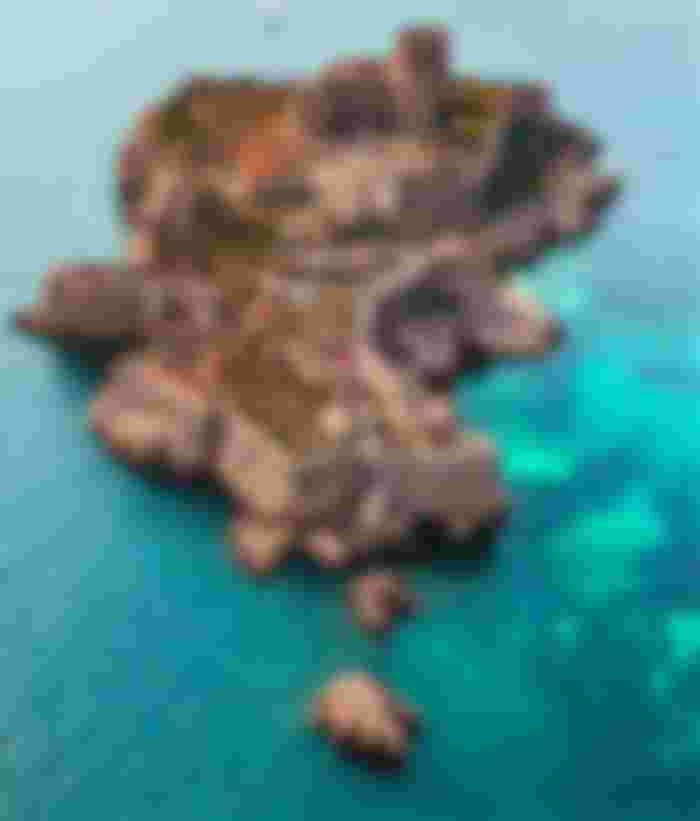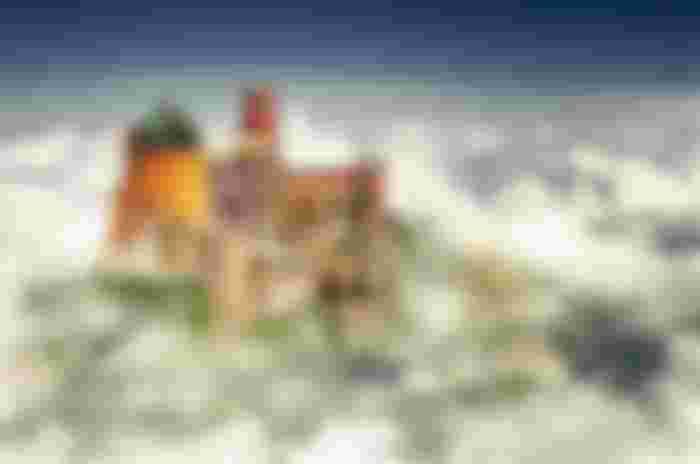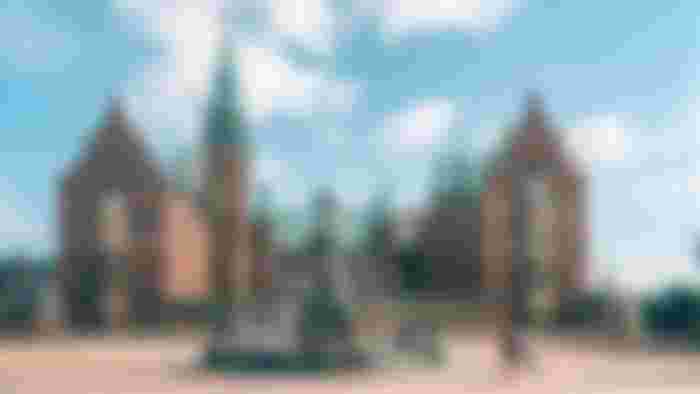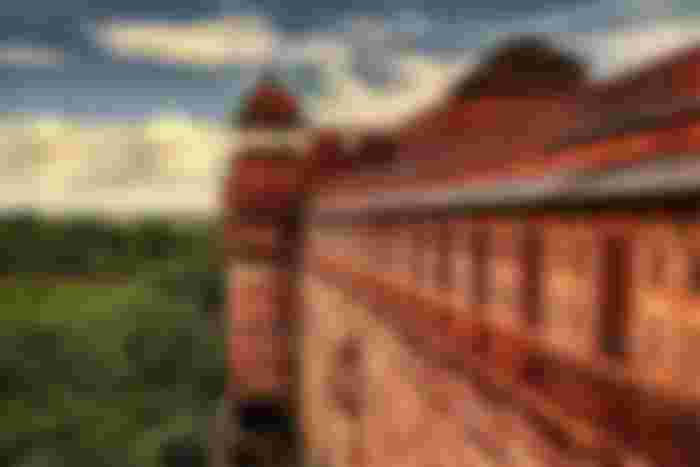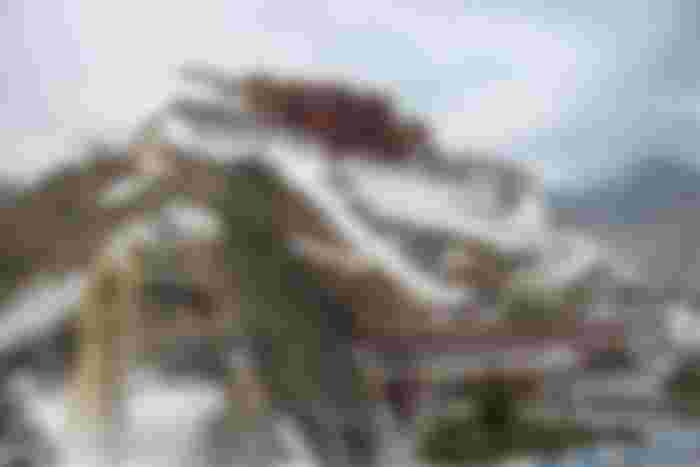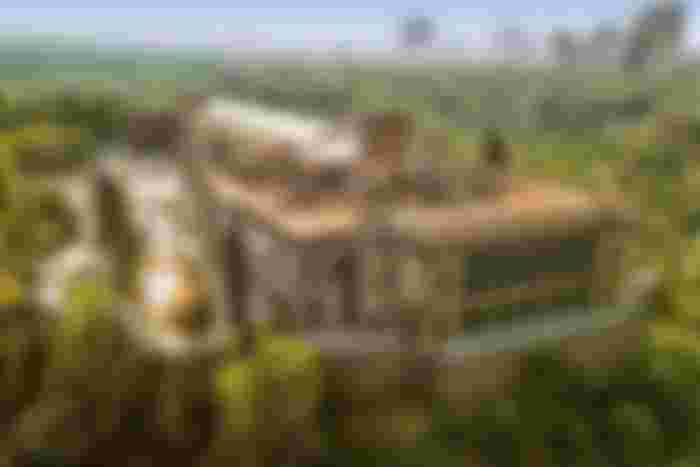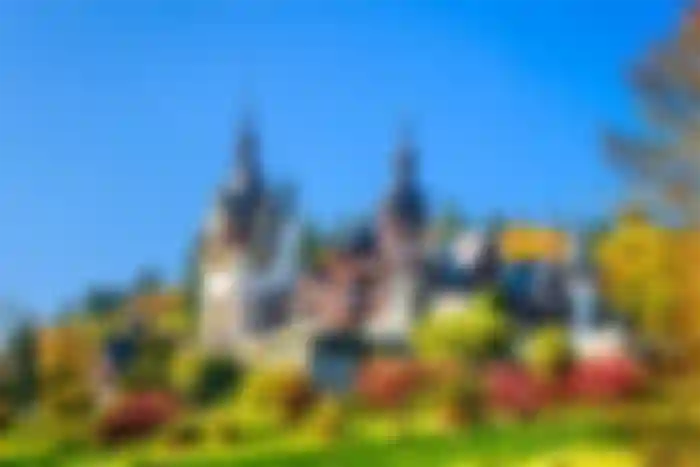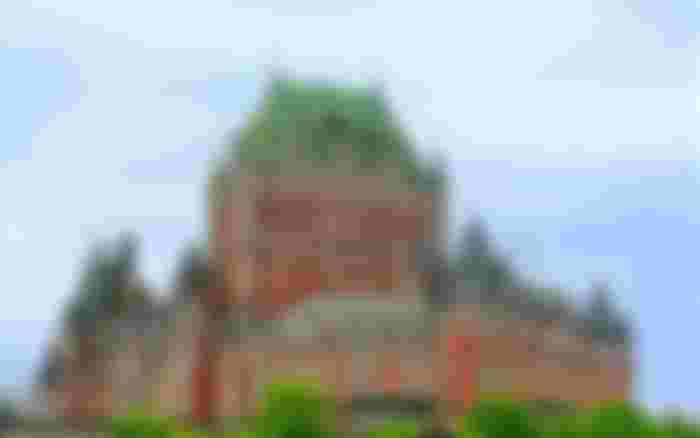Castles and Fortification (IV)
(The Library: Article)
Castles take time to build and are often developed in phases, with some sections being constructed by a given monarch, and others, added later under a different landlord.
Just like castles and fortifications, writing my articles takes time and I have lacked the discipline to provide more frequent publications. But my final article (for now) regarding my passion about castles and ancient constructions is explored here, in the following paragraphs and series of images. For a refresher on the previous episode, check Castles and Fortifications Part III here. Also of note, I have edited and added the missing Château de Pierrefonds on Part III, where it belonged. Now onto new discoveries!

Carcassonne, France (100 BC)
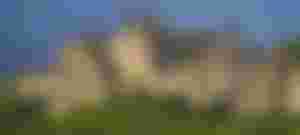
In my chronological exploration, I don't know how I could've missed this one. Carcassonne is today a city in the south of France. Its strategic location near Spain and near the Mediterranean Sea, gave the Romans good reasons to build the main fortifications of this citadel. Later, the Visigoths would continue its construction.
It is believed that this citadel was the first to use hoardings at the top of its towers, for additional defense. Hoardings are wood constructions which extend the range of the tower and give a better vantage point to attack incoming invaders. What is certain is that the location of this site was inhabited since the Stone Age (around 3500 B.C.)
As with many other castles, it is impregnated with the lands, the cultures and the passage of time. It was owned by some, taken by others, blessed by a pope, conquered, rebuilt and it still remains inhabited.
Matsumoto Castle in Matsumoto, Japan (1504)

A more modern castles relative to the previous one, this is one of the twelve surviving Tenshu of Japan. It is built with stone and wood and was nearly destroyed voluntarily, by the government trying to get rid of feudal medieval buildings. Luckily for us, it was saved from destruction and renovated in the 20th century.
I feel like I am repeating myself, but even for a castle built in 1504, it has also known its fair bit of history about humans and their affairs. Changing ownership through assassinations and sieges, it now entertains tourists and photographers.
Originally, the castle would have been surrounded by a bailey, a moat and outer fortifications. Some of those were destroyed shortly after 1872.
Château de Chambord in Chambord, France (1519)
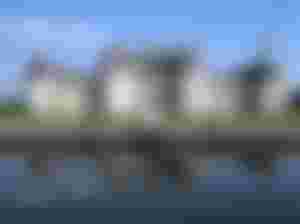
As we progress through time, the role of castles changes from being primarily a defensive position, to being luxurious apartments for the rich. While the main structural elements of a castle remain, such as the moat, the central keep and the surrounding wall cornered with towers, some elements are modified. For instance, the windows are facing the front and are large and tall, thus favouring more light and less defence.
The French Renaissance architecture and - at the time - more modern interiors, were also inspired by Italian styles. It's roof is composed of no less than 11 kinds of towers and three types of chimneys. The interior also features a double spiral staircase, reminiscent of our DNA, still unknown at the time.
"the towers, cupolas, the gables, the lanterns, the chimneys, look more like the spires of a city than the salient points of a single building."
--Henry James, on the Chateau de Chambord
Château d’If, France (1524)

All castles have their own unique identity. Some features are always remarkable in one way or another. Sometimes, it is their rich history, sometimes it is how tall the towers are or other times, it is due to the exquisite location where the castle was erected.
The Chateau d'If, in France, built on the island of If, shows a perfect example of how location can influence the purpose of a fortification. In this case, the castle was used as a prison and never had to repel any real attacks. Furthermore, in the 16th century, construction had improved and numerous criticism of the quality of the work were voiced.
The Castle is famous for appearing in Alexandre Dumas' The Count of Monte Cristo 1844 novel.
Agra Fort in India (1565)

If one castle can be said to be well defended, it is the Agra castle. Featuring a moat with walls 70 feet tall (28 meters). It also features bastion towers, embrasures, machicolations and battlements. All of that with double ramparts, along with inclined drawbridges leading to the outer wall and even a 90 degree elbow between the inner and outer gates. The gates themselves are massive and one is named "Elephant Gate". The location was known to be impregnable in that time.
Agra fort was also called Qila Agra (with Qila meaning "fort"). Names that preceded the British invasion are Qila-a-Akbari and Lal-Qila. The city of Agra was the center of goverment in India until it was moved to Delhi in 1638. See the Red Fort below.
The red sandstone used in its construction also give it a unique identity. The Red fort is another of its multiple names.
Pena National Palace in Sintra, Portugal (16th century - 1854)

The Pena Palace is a castle built in the Sintra mountains and the architecture can be attributed to the romanticist style. An apparition of the Virgin Mary on top of the hill led to the construction of a monastery and chapel, which were later partially destroyed during the earthquake of Lisbon in 1755.
Later, between 1842 and 1854, under a new patronage, the site was rebuilt with the architecture, style and colours that we see nowadays. The colours, of course, had to be refreshed since time had washed them away.
Interestingly, the castle's many styles are what gives it character; Influences can be found from the Neo-Gothic, Neo-Manueline, Neo-Islamic and Neo-Renaissance. The Palace features luxurious interiors, having been inhabited by monarchy. Also, it is surrounded by the Pena natural park, full of labyrinthine paths.
Frederiksborg Castle in Hillerød, Denmark (1620)

Fredericksborg, litterally "Frederick's Castle" has like many other castles, evolved through time. The construction is spread across multiple buildings, which are built on three inlets.
First built in the early 16th century, it was later expanded by Frederick II, king of Denmark and Norway. The bathhouse, situated on the Northern inlets, was completed in 1581.
Then, Frederick's son, Christian, decided to completely renovate the castle and to have it built in the Renaissance architectural style. The previous central building was demolished first. Overall, the reconstruction lasted until 1620.
A few centuries later, Frederick VII would by accident set the castle on fire in 1859. It was then renovated again. It still stands proud today and its roof is ornamented with multiple towers and turrets.
Fasil Ghebbi in Gondar, Ethiopia (1636)

Inheriting its name from its founder, Emperor Fasilides, the Fasil Ghebbi (Castle) marks a turning point in the customs of the populations of Ethiopia just around 1636. The Emperor then decided to settle down in a permanent location instead of living a nomadic life. Thus was built Fasil Gemb to serve as his main residence.
The architectural styles are varied and show influences by Arab, Hindu and Baroque cultures. Other subsequent emperors have expanded the domain surrounding the main construction.
Much of the castle did not last the abuses of time but many parts were renovated and repaired later. Even today, in terms of tourism, Fasil Ghebbi remains a beating heart at the centre of Gondar.
Red Fort in Delhi, India (1638)

This fort was commissioned in 1638, when the seat of government was moved from Agra to Delhi. The colours and style of architecture are both reminiscent of the ones from the Agra fort.
Also, much like some of its contemporary predecessors, the castle is more of a palace than a fortified place although it still features many of the defensive components of a castle.
Large gates are named and important for multiple cultural events such as ceremonies and speeches by the Prime minister. The interior of the area enclosed by the walls of the castle is vast and comprises multiple buildings, somewhat similarly to the Forbidden City in China.
Potala in Tibet, China (1649)

The journey I embarked on has led me across many continents and epochs. Comparing the various architectures and the evolution of castles as the world changed beneath them is full of surprise, just like archaeology.
The Potala Palace is believed to have been built over the remnants of an even older fortress called the "Red" and/or "White". The current fortified building as we see it is called a Dzong.
The thick walls are made of stone and at their base, they reach up to 5 meters of thickness. Also, molten copper was poured into the foundations to strengthen it, a technique that I honestly had no idea even existed. The site, as with other contemporary castles, is more of a palace than a fortified construction meant to repel invasions. Multiple shrines and rooms adorn the interior of the palace.
Chapultepec Castle in Mexico City, Mexico (1785)
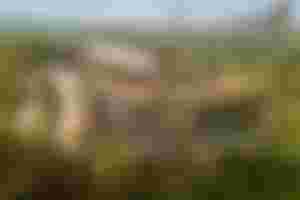
It is interesting and rare to find a castle in the Americas and as I have written before, castles after the 16th century became more palaces than places of war. Chapultepec, "The Castle on Grasshopper Hill", is no exception.
The castle was built by the Spanish occupation forces on top of the highest hill in Mexico city. The castle was inhabited by the first Emperor Maximilan of Mexico and then by the president for many years.
Like many other castles and like all buildings, time did its work and the castle had to be renovated. Its luxurious interiors were used abundantly in the Romeo & Juliet movie adaptation of 1996. Interestingly, the castle has a roof garden.
Peleș Castle in Sinaia, Romania (1860)

With Peles castle, my list of chronological entries is drawing to an end. Castles have now definitely ceased to occupy a role as military fortifications and are instead now residences of governors, kings and queens, until their passing and until the time changes.
Peles castle is in fact a palace which is now part hotel and part museum. The art style employed is best described as Neo-Renaissance. The roof work is particularly interesting and represents a good composition, image-wise, of the entire scene. Framed with the trees in Autumn, as is seen above, Peles castle has charm and character.
The following quote, by Queen Elizabeth of Wied, says much about the construction of the castle:
"Italians were masons, Romanians were building terraces, the Gypsies were coolies. Albanians and Greeks worked in stone, Germans and Hungarians were carpenters. Turks were burning brick. Engineers were Polish and the stone carvers were Czech. The Frenchmen were drawing, the Englishmen were measuring, and so was then when you could see hundreds of national costumes and fourteen languages in which they spoke, sang, cursed and quarrelled in all dialects and tones, a joyful mix of men, horses, cart oxen and domestic buffaloes."
Neuschwanstein Castle in Schwangau, Germany (1868)
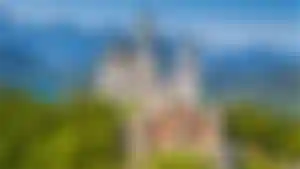
More recently, some hotels have taken inspiration from ancient architecture and have created some more wonders of architecture. Neuschwanstein is one of those. By deliberately following ancient architectural styles, but with more modern construction techniques, King Ludwig II commissioned this castle to live his idea of an ideal medieval life, away from Munich.
On the site of the castle, two older and smaller castles once surveyed the land. They were both demolished, along with the keep, to build this newer castle in their place. Many styles have inspired the architects and Ludwig II himself; Romantic, Gothic and Babylonian styles are recognisable.
The castle remains today a global symbol of the romantic period and it draws enormous crowds every year. It has nourished imaginations and has led to multiple well known inspirations such as the castle of Disneyland. But the castles which inspired Neuschwanstein, were the Lichtenstein Castle, the Hohenzollern Castle, and others such as Stolzenfels Castle.
Château Frontenac, Québec city, Québec, Canada (1893)
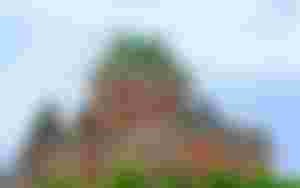
I grew up near this castle, seeing it for the first time in all its majesty as a 5 or 6 year old boy. I was impressed. And not only by the castle, which is the subject of this article, but also by the citadel surrounding the hill of Québec city. It is also known as Parliament hill since it houses the seat of provincial government. I still recall my mother telling me how the castle bore the name of a famous French character named Frontenac.
Québec city was indeed the site of battles, but not medieval ones. But large stone walls and ramparts still had their role in the defence of cities in the colonial era.
The castle is a hotel and was built as such. There is no military history behind it. But its architecture, with all sorts of towers and roofs, catches the eye. I have dined and danced in this castle.
Jilong Castle, China (2011)

With this last entry, I intend to close the chronological list of castles. I have explored more than 60 and this last one allowed me to show even more variety by finding another example in China, built a little more than 10 years ago. Here again however, what we are truly looking at is a hotel in the shape of a castle. I applaud the modern castle builders who maintain this human tradition of keeping what is precious well guarded. Here the guests and marriages and other festivities are sure to be well taken care of.
Interestingly, the castle was commissioned by a power magnate who had an electrical power plant installed next to the castle, thus providing all the power the hotel needs. The style is very reminiscent of the romantic architecture reproduced by Neuschwanstein. Also, as with the Château d'If and the Mont Saint-Michel, it sits nicely surrounded by water in a picturesque location.
I must admit that I did know of the existence of so many castles around the world. They are found all around the world with some exceptions. But if we include fortified temples, then the list of nations and continents would expand even more. But the list of castles is already very impressive. Some honourable mentions, to name but a few are:
Château de Vincennes, France (14th to 17th century)
Castillo de Coca, Spain (15th century)
Corvin Castle, Romania (15th century)
Fantasy Castles
I did not explore the imaginative part of castles designs in my series of articles. I wanted here to focus on real castles and their construction techniques. The improvements made over the years and their gradual influence on futures ones.
But in another article, I should explore the castles of fantasy. Those of our imagination. Since those thoughts are rooted in our memories and knowledge of real castles, they can lead to all types of creative and interesting concepts.
As an example, consider Dracula's castle. It is inspired by Romanian history, rooted in truth and then grown out of our imagination into this monstrous castle, home to a blood sucking vampire! Check my article about Dracula : Moonlight Sonata.
Coming Up Next
This concludes my series exploring castles throughout the ages. A lot of history permeates those constructions. While in Part III the main goal of a castle was still to defend, in Part IV, that goal changed to being more of a palace and then more of a relic from the past voluntarily converted into tourism income properties! Hopefully, one day, I get to visit of the ones in my articles. Frontenac is done. Again, I invite my readers to let me know which ones you prefer in the comments below.
Next is a good old book review. The one I am interested in - again - is To Kill a Mockingbird by Harper Lee. Stay subscribed so you don't miss future posts. Thanks for reading!
References
https://read.cash/@Librarian/castles-and-fortifications-iii-99496449
https://read.cash/@Librarian/dracula-moonlight-sonata-35e4f373

